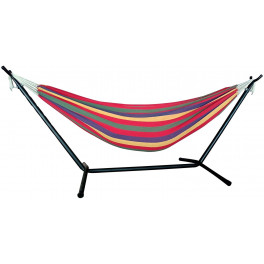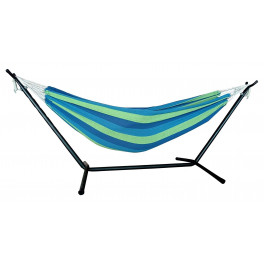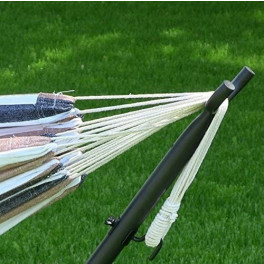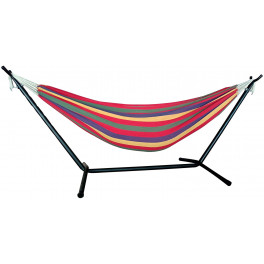If you’ve been wondering how to make a container pond, then you’re in luck. Thankfully, you don’t have to dig up your lawn or purchase thousands of dollars worth of equipment to capture the beauty and tranquility of a pond.
In fact, all you need are a few basics (you may even have them at home already!), some water plants, and a plan.
Making a DIY pond couldn’t be easier. Here’s everything you need to know to make garden ponds for your backyard.
Gather the Materials
- A container that’s at least 14 inches in height and 10-12 inches in width. It doesn’t really matter what it’s made of, but it must be waterproof. To give the perception of depth (especially if your pot is shallow) look for one with a black or brown interior.
- A variety of floating plants such as water hyacinth, water lilies, calla lilies, duckweed, and mosquito ferns.
- A few marginal pond plants that grow in shallow water such as horsetail, cattail, yellow iris, black iris, and water wisteria.
- Bricks, flat rocks, plastic containers, or planting baskets to position plants.
- A bubbler or fountain to add oxygen to your pond.
Step by Step: Your DIY Container Pond
Step 1: After collecting your supplies, create a plan for your container pond. Answer these questions to sculpt your plan:
- Where will you place your container pond? Container ponds need 3-6 hours of direct sunlight a day to remain in optimal health. With too much or too little sun, you run the risk of an unhealthy environment for your plants and animals. The best sunlight for container pond plants and animals is morning sun.
- Do you plan to add fish, snails or other aquatic creatures into the pot? Animals are a great addition to any container pond because they help stabilize pH levels and they eat unwanted algae and insects. However, you must wait 2 weeks at the minimum before introducing them into a new container pond.
- Where will your water come from? Depending on your weather conditions, you may need to replenish the water supply in the container pond up to a few times a day in those hot summer months. Ideally, you want to situate the pond close to a water source. If your water is chlorinated, be sure to use a chlorine remover because chlorinated water can kill your pond animals.
Step 2: Prepare your pot, making sure it’s watertight and clean. If you’re interested in creating a “deep” look, then paint the inside black. Then, place it where you plan to permanently keep it. I chose a ceramic look-alike pot ($25) that’s actually made of plastic. I liked that it was colorful yet lightweight and completely weatherproof. I glued 1-inch plastic feet to the bottom of the pot to lift it from the ground.
Step 3: Install the fountain (if applicable). Because I live in a mosquito-rich area, I was worried that all the neighborhood mosquitos would lay eggs in my pond. To combat this, I decided to install a small pond fountain. The oxygen created from the fountain makes the environment inhospitable to those pesky insects. I purchased the fountain, made specifically for container ponds, at my home improvement store ($20).
To install the fountain, drill a hole through the bottom of the pot to accommodate the cord and plug for the fountain/bubbler. The unit’s instructions should give you information on the circumference hole you need. Then, snake the fountain’s cord through the bottom of the pot and secured the hole with the fountain’s rubber stopper.
While drilling the hole, part of my plastic container cracked. To avoid a leak, I applied clear, waterproof silicone caulk and allowed it to dry for 30 minutes before I moved onto the next step.
Step 4: Add your bricks/plant lifts. To keep my pants at the correct height, I poked holes in old plastic containers from my kitchen (free). However, you can use bricks, stones, or even plastic plant baskets ($3 each).
Step 5: Position your plants. Read the instructions on your water plants to determine the best water depth. I used a mini cattail, water lily, and a black gamecock iris in my small container pond. Here are the suggested planting depths for each:
- Cattail: 1-6 inches
- Water Lily: 12-24 inches
- Iris: 1-4 inches
Both the cattail ($7) and water lily ($9) were sold in pond-ready mesh bags at my local home improvement store. I found that all the water plants sold in this manner were between $7-$12 per plant. They aren’t fully grown yet and they take upwards of 1-3 months to sprout upwards out of the water. To help identify the plants before they grew, each plant included a floater.
The iris ($7) was sold in a regular pot with multiple holes in the bottom. This iris species loves ponds but needs soil. To prevent the soil from floating in the pond, I draped cheesecloth (free) over the top of the soil and then placed a half-inch of pea-sized gravel above that.
Step 6: Fill the container with water and let sit for at least 2 weeks. Over this time, your container pond should stabilize enough to allow the introduction of fish and/or other aquatic animals. You can also expect your netted water flowers to grow and bloom within 4-6 weeks.
Total Project Cost: $67.40
Total Time: 1 hour
Using a planter to make a pond is a super simple way to add a beautiful and self-sustaining water feature to enjoy for the better part of the year. For more water-related backyard ideas, check out this tutorial for installing bubble rocks.


























